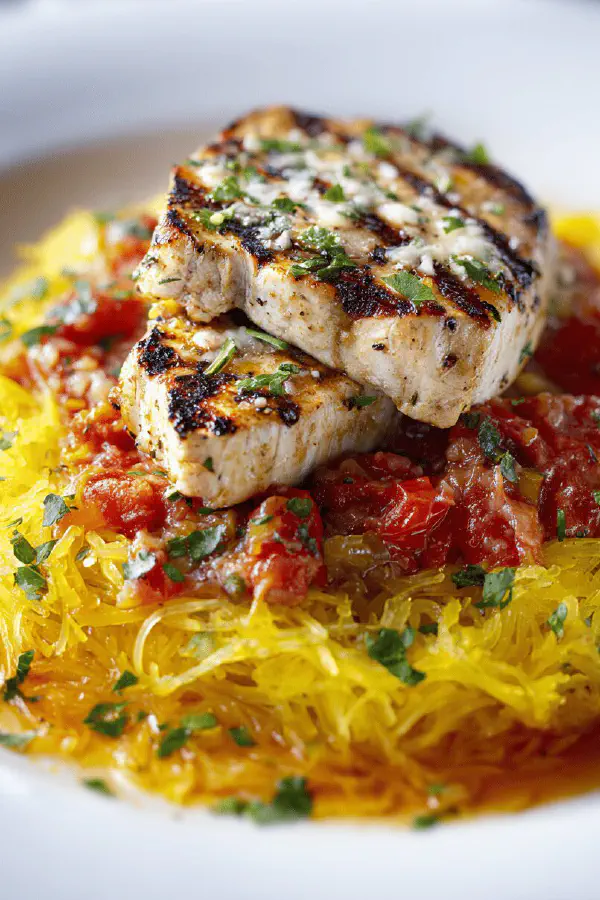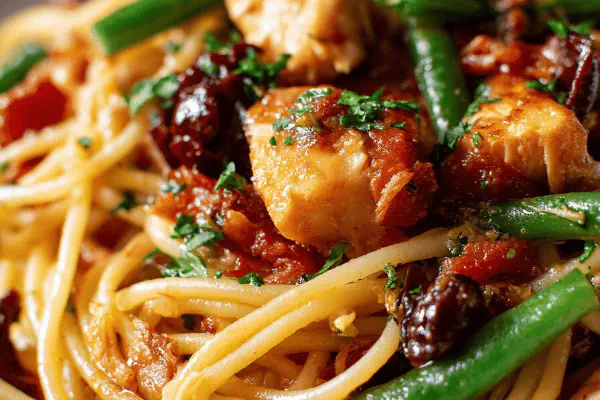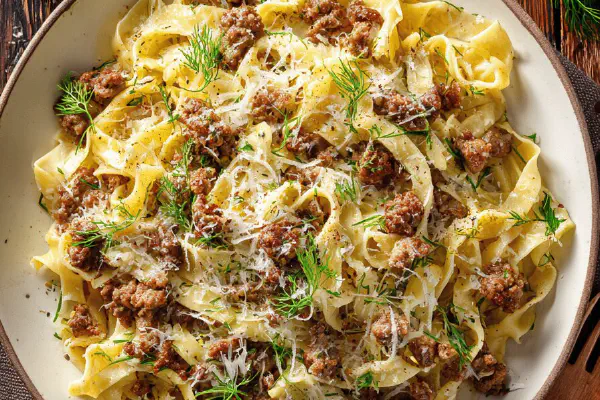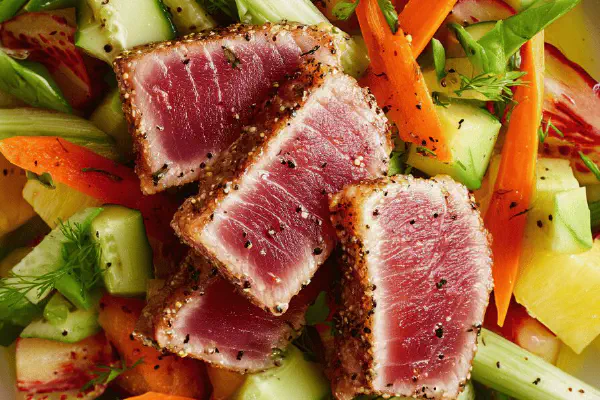Featured Recipe
Grilled Swordfish Spaghetti Squash

By Kate
"
Swordfish steaks seared to golden, paired with spaghetti squash strands tossed with a bright tomato sauce infused with shallots and fresh herbs. A sharp parmesan and parsley blend lifts the squash while white wine adds depth to the sauce. Substitutions like cod or trout work well. Cooking times adjusted for squash tenderness and fish thickness. Technique tips ensure perfect sear and balanced moisture. Sauce acidity cut with a pinch of sugar. Practical advice on managing squash cleanup and fish doneness indicators.
"
Prep:
20 min
Cook:
Total:
Serves:
4 servings
seafood
gluten-free
healthy
dinner
Mediterranean
Introduction
Squash roasting smell fills kitchen. Squash done when squash fibers pull free easily but not mush. Tomato sauce must brighten, acidity balanced; wine helps but never overpower. Searing swordfish needs hot pan, no overcrowding or fish steams instead. Holding fish longer ruins texture, better cook in batches or serve immediately. Mixing cheese into squash keeps strands moist, sharp cheese cuts through the sweetness. Parsley freshens before serving; thyme in sauce adds depth. Meat and veg in perfect balance. Substitutions help when swordfish pricey or unavailable. Use cod or trout with same method; cooking times vary. Squash cleanup? Line tray with parchment for easy cleanup, saves frustration. Sauce adjustments easy; add pinch sugar or splash vinegar depending on acidity. Flavor layering critical: soft shallots and garlic before wine prevent harsh garlic bites.
Ingredients
About the ingredients
Increasing olive oil by 20% makes sure enough fat to keep squash moist without greasiness. Asiago cheese swapped for parmesan for nuttier flavor and better melting properties. Thyme replaces basil for earthier note that stands up to tomato and fish. Wine quantity slightly reduced to prevent sauce from becoming too sharp or alcoholic. Swordfish quality crucial – fresh firm texture most important; if unavailable, cod or trout can substitute but cooking times must reduce due to flakier texture. Squash size chosen a bit larger for more yield to feed 4 portions comfortably, fibers more developed for a satisfying bite. Garlic minced fine to avoid bites of raw toughness, sweat gently to draw out sweetness. Salt carefully throughout process to balance flavors but avoid drying squash or fish. Parchment paper under squash crucial to ease cleaning – burnt squash juices stick badly.
Method
Technique Tips
Oven temperature set to slightly lower than original, extending roast time to avoid overbaking which makes squash watery and mushy. Cut squash ideally equal halves to ensure even cooking. Roast cut side down traps steam, helps tenderize while preventing drying. Fork test critical; soft but not collapsing. Shallots sweat slowly until translucent first, no caramelization – gives softened flavor without bitterness. Reducing wine nearly dry concentrates acidity and leaves clean fruit taste. Tomato sauce simmered briefly; signals steam rising but not bubbling furiously. Adding herbs off heat preserves fresh green notes. Oil heating to shimmering shows ready pan. Searing fish with dry surface is essential for good crust; pat fish completely dry before seasoning. Watch color closely – golden dark crust means flavor, black char means burnt and bitter. Fish thickness determines timing; thinner requires less time. Addition of cheese and parsley last step – melting cheese throughout strands gives creamy texture. Serve shortly after plating. Sauce poured in modest amount keeps plate tidy and concentrates flavor. Cleanup tip: use parchment under squash, keep warm covered squash strands to avoid drying during rest.
Chef's Notes
- 💡 Use a fork to check spaghetti squash. Flesh should pull away easily but still be firm. Overcooking ruins texture; threads get mushy, pasty mess.
- 💡 Make sure to sweat shallots slowly. They release sweetness without browning. Patience here crucial; rush it, bitterness takes over.
- 💡 Searing swordfish requires correctly heated pan. Hot but not smoking. Fish should sizzle sharply; overcrowding makes it steam, waste texture.
- 💡 Don't forget to taste sauce; adjust acidity with a pinch of sugar if it’s too sharp. Small changes vastly improve balance.
- 💡 Cleanup tip: line pan with parchment paper underneath squash. Saves time scrubbing burnt juices off. Always a messy task otherwise.
Kitchen Wisdom
What's the best way to know when swordfish is cooked?
Look for firm flesh; slight translucency in the center. Overcooked? Turns dry.
Can I substitute the squash?
Absolutely; zucchini or roasted cauliflower work too. Adjust cooking times to avoid mushiness.
What if I don’t have thyme?
Use oregano or Italian herbs instead. Different but still flavorful choices without being harsh.
How to store leftovers?
Refrigerate in an airtight container for 2-3 days. Reheat gently to prevent drying out.



